Better films every fortnight. Subscribe to Syrp Lab YouTube.
Please note, we may earn a commission from purchases made via links on this page as an Amazon Associate.
What if we could pack up our full podcast studio into one box & hit the road?! It's time for another episode of Film Builds.
We've gotten pretty comfy in our custom-built studio and after a bit of tinkering, we now have a space to produce a great-sounding podcast. But with the world opening back up, we're feeling the urge to travel again. Matthijs is off to the outback and Chase is looking at projects in other parts of the world. The thing is our new Media Offline series is just kicking off, how can we continue to create this while on the road? Can we produce an entire podcast out of just one box?
The idea is to create a modified hard case that we can take with us anywhere, open up and in less than a minute, be set up and ready to record. It needs to be almost as good as our large-scale setup and to make things harder, we need it to run off battery power.
It's going to be a challenge as we have a fair bit of gear, but our resident filmmaker Matt is also an industrial designer, in fact, so is his twin brother who also works at Syrp Lab, but that's another story. So, we tasked Matt with scaling down our full-size podcast setup to a compact travel version.
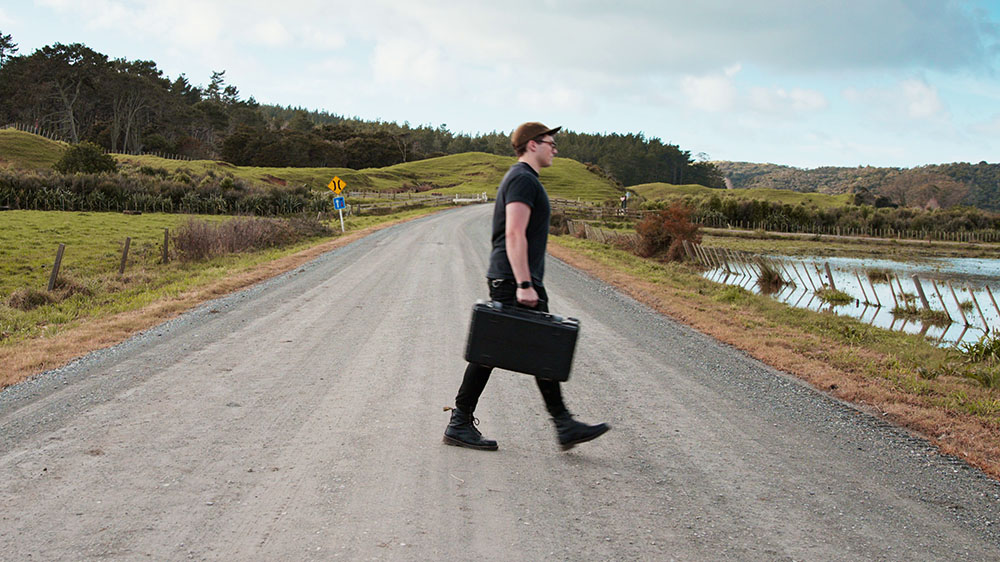

Our Studio Setup
At the heart of our full-size podcast studio setup is 2 Cardioid mics on large adjustable arms, these beauties capture our crystal-clear audio that runs into our Zoom F6 Field recorder. We are not giving up these, they are gonna have to go into the box.
On the video side of the room on Manfrotto Fast Tripods we have the Canon C200 as our prime centre camera and for second angles we have a Canon EOSR and EOSR5 on either side. It's a lot to scale down into one travel case.
The Scale Down
After much deliberation, we narrowed it down to an audio setup consisting of two mics, two arms, a sound recorder, and headphones. And for our video component, we'll fit a Sony A9 with a phone mount and a small monitor to the case lid. That way, we have an audio-only set up for two guests and can use the lid with video when doing a remote interview.
We decided on fitting everything into a Prolight Reloader Tough 55 Case so it's carry-on size and weatherproof. You can use any case big enough but this one gives us some great options to mount to. More on that later.
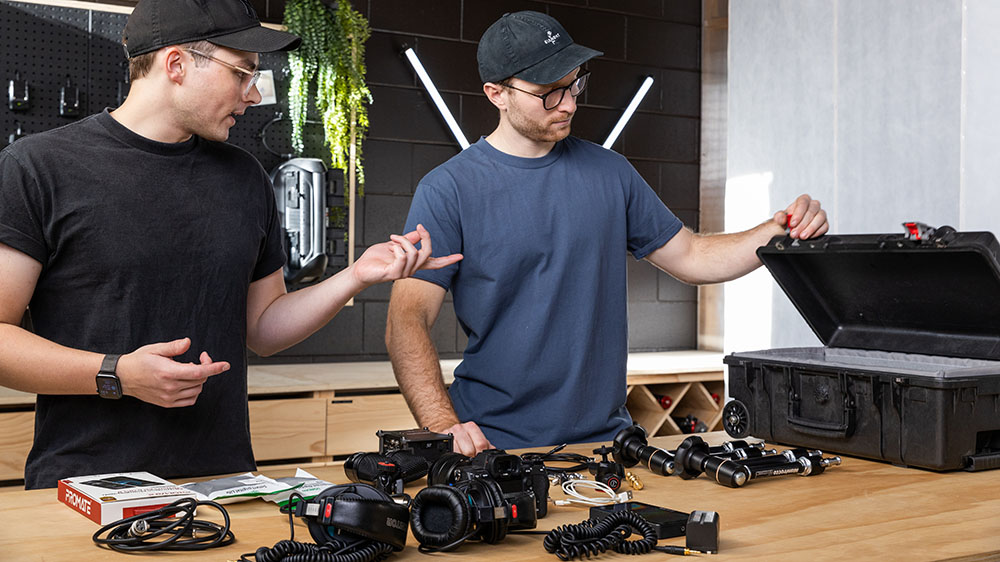

Mic Arms
We had our hearts set on spring-loaded arms for our Mics, but we couldn't find any small enough to fit in the case, so that's the first to go. We settled on some Manfrotto Friction Arms as they fit well and are very positionable – they're made for heavy duty payloads in the studio after all. The problem is, like most things in the film industry, they mount with 1/4 20 threads, not something you usally find on cases.
We could have just screwed in a block from the outside that holds our Mic arm, but that was going to ruin the weather seal and integrity of the case. Besides we had a more ingenious idea. This particular case has tapered utility slots around its side, so we came up with the idea to 3D print some mounting blocks that slipped right in and held our arms. If you're using another brand case, your best option here is probably just to glue using the right kind of plastic weld or screw in from, the outside. Try JB Weld for the glue if that’s the option you’re going with.
Matt designed the mounting block in SolidWorks, printed them and the fit was great. We're really stoked with this solution and if you want to do the same you can download our print files from the below link.
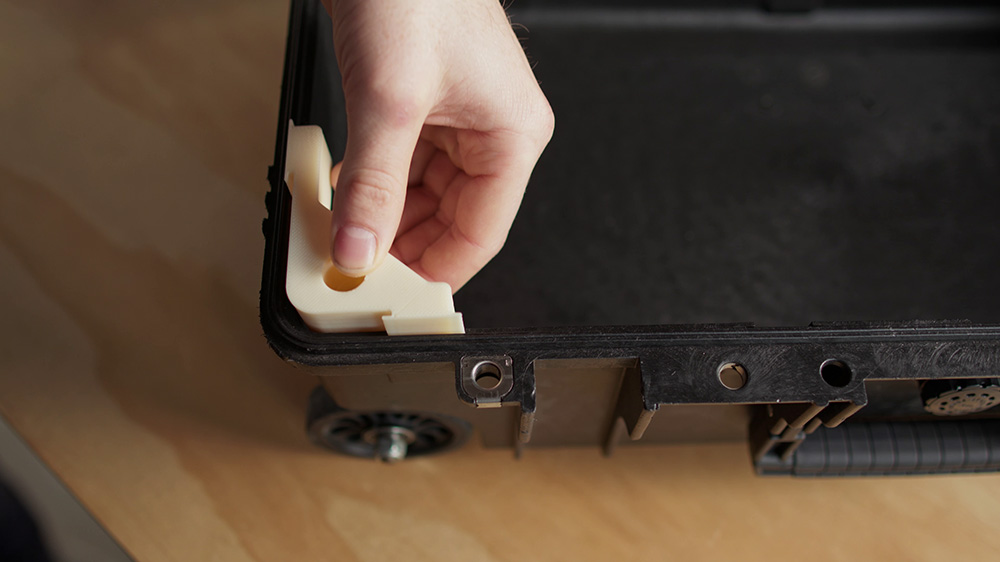

Power
We could run everything off their own batteries for sure but it’s a mission having 6 different batteries to charge and monitor their levels. By running everything off one hefty battery pack, it should be easier to stay on top of this.
We chose a Promate AuraTank-20 battery as it has 20,000mAh of juice, which we can still travel with domestically here in New Zealand (check with your country's flight rules regarding batteries) And it has 2 USB-C and 3 USB-A outputs, which are needed for all our hungry devices. But will it power them long enough for an interview? We put it to the test by setting it up overnight to record for ghosts in our studio. No ghost, but we did get over 4hrs of recordings, so we were happy.
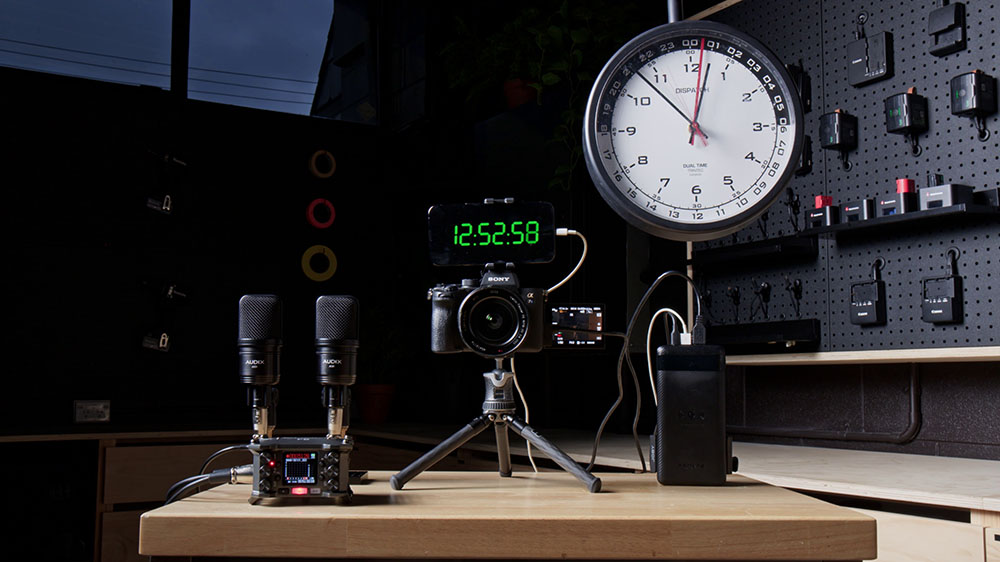

Foam Protection
To keep all the equipment secured and prevent it from smashing into one another we decided on some high-density packaging foam. Using a DIY hotwire cutter we set about cutting out spaces for each component. We quickly found out that was far easy said than done. Purely by hand, it was simply too difficult to cut clean straight lines. Put simply they... they didnt look good.
So we retooled adding a bearing at the base of the wire cutter allowing us to follow plywood templates of the cut-outs. It worked well and in no time, we had our two and a half layers of foam cut. You can find a bunch of guides online to build your own cutter or even pick one up off the shelf from a hobby or art supply store. Make sure you get the right Nichrome Resistance wire or you’re going to have a rough time.
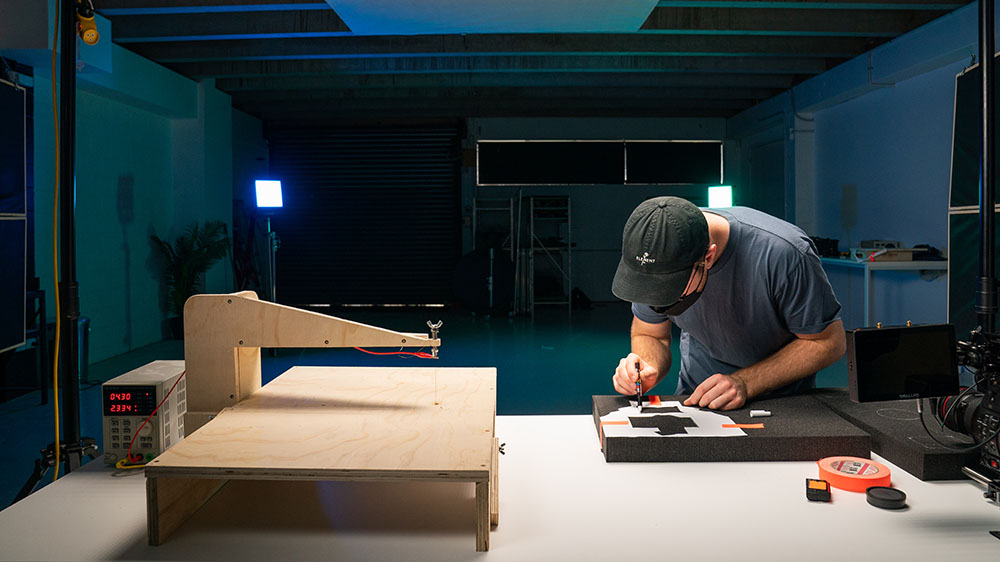

Video
We want to be able to shoot remote interviews with this rig in case we are also remote… For this, we need a camera and Phone mount, but there really wasn't enough room in this case for a tripod. However, we discovered the case has these 4 mounting points on the lid, perfect for attaching a MDF base. From there we were able to bolt on a small Manfrotto ballhead and some generic utility cheese plates. With the MDF painted black and the lid foam reinstated it was looking professional.
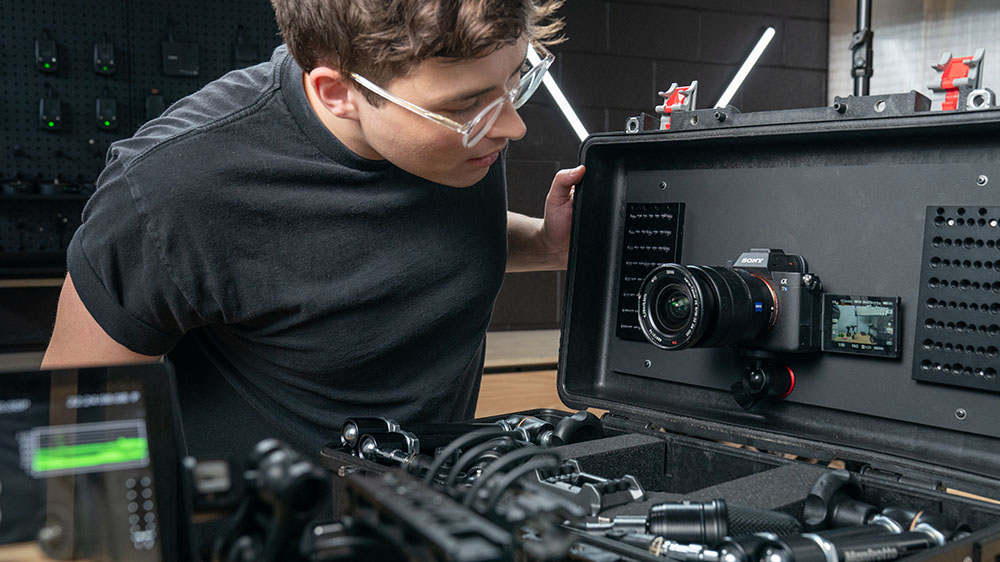

Putting it to test in the wild
With everything plugged in and charged up it was time to take it on the road and put it to the test. We're spoiled for choice of beaches here in New Zealand, so we quickly picked a remote one off the map and hit the road with our Podbox.
Success, it works! Everything made it to the beach in one piece, it was set it up in a few minutes and ran off the battery brilliantly.
If we were to change anything we would add a deadcat or foam to the microphones to help with plosives and the wind. Other than that, it's ready for travel. Keep an eye out for upcoming Media Offline interviews in far-flung places.
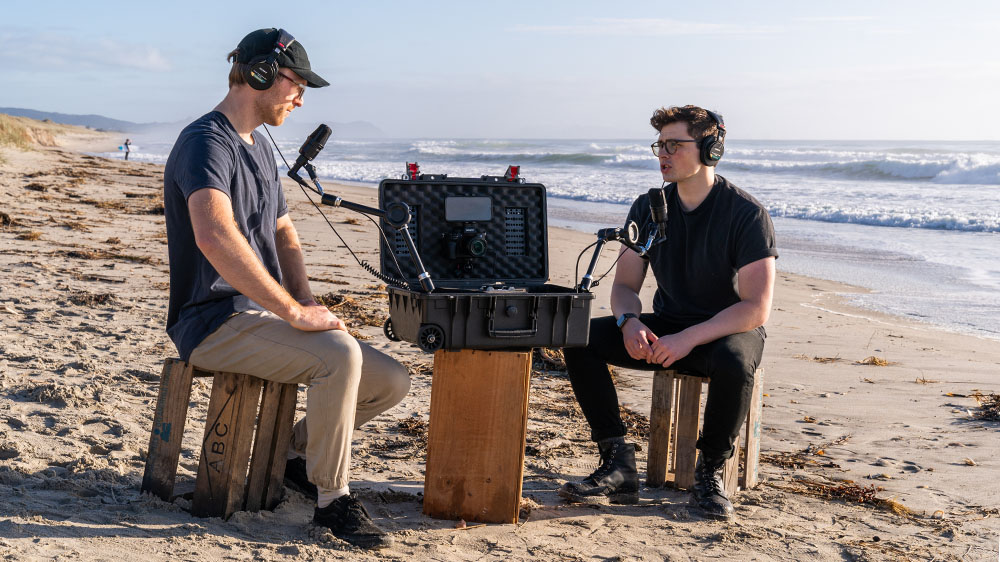

Want to make your own Podbox?
See our complete shopping list of parts for this build
We’ve also made the design available with a handy guide that included the 3D print files, follow the link below.

